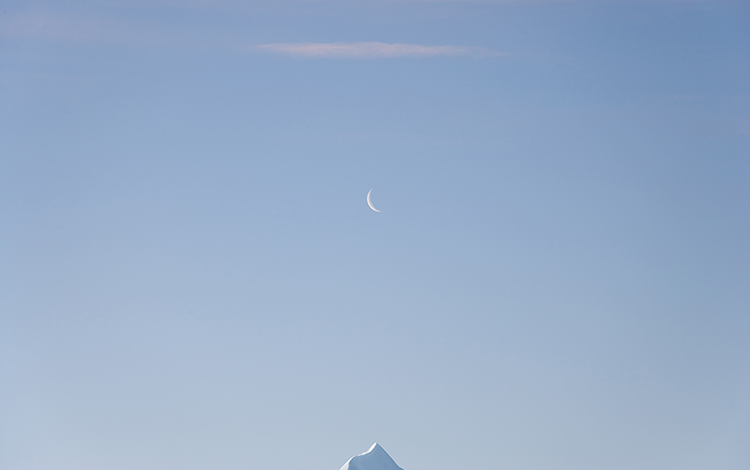Tips To Help You How To Sequence Your Images Like A Pro


Clouds roll in.


The sky clears.
Sequence can enhance images and may even change the stories they tell.
Sequence
How you present your images can be as important as which ones you select. It’s the art of sequencing (and it is an art), which involves specific techniques that you can learn. What are some of the guiding principles involved? Here are a few.
Quality
Start strong. Finish strong. Make getting there interesting. Whether a symphony, a novel, or an exhibit, it’s good advice for arranging any creative project.
Identifying your strongest image is essential. It sets the highest level of quality, against which all others will be measured. It alone may help you create an appropriate structure for the rest of your work. This singular image is often used to lead a body of work (in the announcement of your project and possibly as the first images seen in the sequence), becoming the most frequently viewed image.
While you may want to arrange your images from strongest to weakest for your own information, you certainly don’t want to present them to other people this way. Instead, you want to tease out your strongest images along the way, sustaining attention toward a strong finish.
While not every image you include in a project needs to be equally strong, a majority of images included should be representative of your best work. The rest should be almost as good. Use lesser images only when they help illustrate essential points that would otherwise be overlooked or add complexity and dimension.
No amount of arranging will make up for the lack of high-quality work. It may be easier to build mass into a project by including lesser amid stronger works; this is rarely an effective strategy. Quality makes the primary impact. Volume is secondary. Even if taken to an extreme, a large dose of average work is far less impressive than a small dose of high-quality work.
To sequence a project, you can use the metaphor of building a fence. The strongest pieces can be thought of as posts. The less strong pieces can be thought of as rails. You want to start and end with the very strongest pieces to create a strong structure. You want to periodically reinforce runs of less strong units with one or more stronger units. You don’t want long runs of rails without posts, or the structure may fail. A fence made only of posts becomes something else entirely, a wall with no variation or grace. The number of strong pieces you include determines how long your fence can be before it gets weak or falls apart.
Story
It’s helpful to identify the story you’re telling. This will impact not only your selection of images but also your presentation of them. Think of each individual picture as a chapter in a book. Simple phrases and sentences can help you. You can logline the entire story, and you can also logline single images (if not every image, then key images that mark transitions) to better understand the function they serve.
Not sure what the theme of your work is? Identify your strongest image. Then compare it to your second, third, and fourth strongest images. Compare what they have in common. Contrast their differences. What do they make you think? What do they make you feel? Identify the subject(s). (What are they of?) Discover the theme(s). (What are they about?) Find the plot. (What happens?) Whether they have plots or not, stories have arcs; they flow. The qualities of direction, momentum, and pace can dramatically alter how stories are experienced.
Proximity
Creating groups of images within a larger flow (subsets in a set) is an essential aspect of sequencing. Of particular importance is side-by-side placement. One image may reinforce or deemphasize specific aspects of another image. Start with pairs, then build to runs. Many images grouped together have a similar effect on each other. Nothing is uninfluenced by proximity. Group like images to reinforce a thought, looking for variation within them to sustain interest. Group strongly contrasting images to provide a counterpoint or to make a dramatic transition to a new subtheme. Remember, comparisons and contrasts may be formal and/or thematic.
Order
Sequencing images can be as creative an act as making them. No matter how clear the intent of the images they’re working with, no two editors will arrange the same material in exactly the same way. Imagine if Hitchcock and Tarantino directed the same movie. Feel the difference? They have styles. Develop yours.
There are many ways to tell the same story. You can start at the beginning and progress linearly slowly, revealing the conclusion, or start at the end with a dramatic conclusion and flashback to explain how we got there. While both methods work (differently), you’ll want to build in twists and turns (surprises) to keep viewer’s interest at a peak throughout the journey. However you decide to share important information (Cut information that doesn’t advance the story.), remember that mystery is an essential aspect for moving any story along; you want to get your viewers involved, keep them guessing and hoping for more, confirm their suspicions, and surprise them along the way.
Remember the golden rules of marketing; primacy (the first thing you see), recency (the last thing you see), and frequency (the number of times you see the same or similar things). Frequency is rated first. Primacy is rated second. Recency is rated third. They’re all important. It’s all about effective, memorable communication. So, the most important thing is to have a consistent body of work (frequency). The next most important thing is to start with your strongest work (primacy). The next most important thing is to finish strong (recency). These key points will help you decide where and how to start and end.
Pace
It’s important to create interesting passages or transitions between elements. The subject often suggests an appropriate pace. (Melville’s Moby Dick is a long sea journey, and so is the book. Hemingway’s Old Man And The Sea is a smaller story and so far more compact.) but pace can also be modified by your subjective experience or your desire to create a specific experience for your viewers. Whether fast or slow, consistent or varied, flowing or fractured, make it interesting.
Length
Imagine the aforementioned epic Moby Dick as a haiku. The result could be equally dramatic, but the experience and the final effect would be entirely different. If a short sequence isn’t compelling, you need more images. If a long sequence isn’t compelling, you need fewer images. Every project has a sweet spot. Find it.
The type of project you take on will often set a quota – a minimum and maximum number of images that you include – sometimes for practical rather than personal reasons, which may be modified somewhat by your intentions or what you want to communicate and how you want to communicate it.
Be Creative
Sequencing involves many of the essential aspects of storytelling. It can make a strong message clearer, creating maximum impact. It can bring to light subtleties and complexities that give a story depth and dimension. Sequencing reveals the style and so the concerns and, ultimately, the message of the artist. This is as true for the artist as it is for their viewers.


Yvan Bedard
18.03.2023 at 09:25Hi,
Thanks a lot for this excellent list of tips. I appreciated every paragraph!
What about series that focus on conveying a feeling (ex. serenity) without a specific story, for the only sake of feeling serene ?
Can it make a series (ex. for exhibition)? A good series?
Sincerely,
Yvan
johnpaulcaponigro
26.03.2023 at 14:17Great question. The answer is yes. Even though we’re tracking themes, feelings, or concepts instead of specific subjects, many of the same storytelling devices can be used to create and guide flow or direction; it’s a less concrete destination but it’s a journey nonetheless.
Dorothy Riess
18.03.2023 at 21:46Thanks for your timely comments about sequencing. I am collecting my images of Iceland to make a book and am far from the actual sequencing as I gather my best. I have no story except the incredible geography of the subject. Will photograph “Iceland from Above”, via helicopter when I return next August, but I think that is a separate book. To begin with, will sequence small prints the same way I would write a piece of music, loud beginning, soft mid section and dramatic ending (Reger Toccata D Minor for organ). Other eyes are necessary as I remember the “feel” of cold and rain, the scent of vegetation, the aura of a place. I can’t possibly be objective. Thanks again for reminding me that each image plays off of the one that preceded it. Dorothy Riess
johnpaulcaponigro
26.03.2023 at 14:23“I have no story except the incredible geography of the subject.” … and your experience of it / your unique sensibility. For a book of poems (visual or otherwise) think more of the sequence as creating a flow with a specific sensibility (very musical); that’s the journey so the story (use the term loosely, hold it lightly … or not at all if it gets in the way… just savor the flow).
Leslie gleim
18.03.2023 at 22:38Awesome, thank you, so needed!!! Wow!
Monica
20.03.2023 at 05:28Great, Thanks! What does logline mean?
You can logline the entire story, and you can also logline single images
johnpaulcaponigro
26.03.2023 at 14:19You’re welcome. A logline is a one-line summation of the story / function of an image.
Steve Schulman
20.03.2023 at 08:18An excellent analysis and strategy for editing and sequencing one’s photos into a project. Thanks so much for posting this.
Sara Frances
20.03.2023 at 10:18Always known for the succinct and pithy post, John Paul proves once again he is a mentor to all image makers and creatives. This is primo advice for all books, whether image or text—or both. May I have permission to share this master class with my photo book students? Thanks for your insight.
johnpaulcaponigro
26.03.2023 at 14:15Thank you. Of course, pass it forward.
Colin Smith
21.03.2023 at 12:04I really enjoyed this article. I really like the analogy of a fence. I’m inspired to sequence some of my images now and create stories!
Thanks